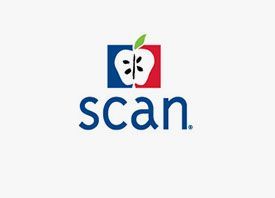PROVIDING MEDICARE INSURANCE GUIDANCE AND PLANNING IN ARIZONA AND BEYOND
Medicare is the federal health insurance program for people 65 and older, people on disability, and people with End-Stage Renal Disease (ESRD). Bishop & Brown, LLC in Tucson, AZ, is here to help!
FREQUENTLY ASKED QUESTIONS
What is Medicare Part A (Hospital Insurance)?
Part A includes inpatient hospital stays, care in a skilled nursing facility, hospice care, and some home health care. A monthly premium may be required for Part A for those who have not paid into Medicare for at least ten years.
What is Medicare Part B (Medical Insurance)?
Part B helps to cover medically necessary doctor’s expenses, outpatient care, and preventative services like seasonal flu shots and other vaccines. It includes a monthly premium that can be deducted from a person’s social security check.
Am I eligible?
Before you can enroll in a Medicare plan, you must first make sure you are eligible.
Most people are automatically eligible if they are 65 years or older and either themselves or a spouse has worked for the past ten years while paying into Medicare. You may also be eligible if you are already getting benefits from Social Security or the Railroad Retirement Board. People are also eligible under 65 if they have ESRD or are on Social Security Disability Income for 24 months or longer.
When can I enroll?
Initial Enrollment Period: If you are turning 65 and have received your Medicare card, you have seven months to choose between a Medicare Advantage Plan or a Medicare Supplement plan. Your Initial Enrollment Period will begin three months before the month of your 65th birthday, the month of your birthday, and three months after your 65th birthday.
Annual Enrollment Period (AEP): You can enroll or review and change your current plan each year between October 15th and December 7th.
Medicare allows enrollment under other various circumstances. If you do not meet one of the above time periods and are in need of a Medicare plan, please call our office to speak to one of our licensed insurance agents so they can provide you with your options.
What are Medicare Advantage Plans?
Medicare Advantage Plans are health plans offered by private insurance companies that contract with the government to provide Medicare Parts A and B, also known as Part C. Medicare Advantage Plans include Health Maintenance Organizations, Preferred Provider Organizations, Private Fee-for-Service Plans, Special Needs Plans, and Medicare Medical Savings Account Plans. If you’re enrolled in a Medicare Advantage Plan, Medicare services are covered through the plan and aren’t paid for under Original Medicare. Most Medicare Advantage Plans also offer prescription drug coverage; these plans are known as Medicare Advantage Part D Plans (MAPD).
What are Prescription Drug Plans?
Prescription Drug Plans (Part D) are a supplement to original Medicare (Parts A & B) by providing additional prescription drug coverage. They can be attached to regular Parts A and B, Medicare Supplement Plans (also known as Medigap Plans), some Medicare Cost Plans, some Medicare Private-Fee-for-Service Plans, and Medicare Medical Savings Account Plans. Private insurance companies approved by Medicare offer these plans. Prescription drug coverage may also be included by Medicare Advantage Plans and follow the same rules as Medicare Prescription Drug Plans.
What are medicare supplement plans (medigap plans)?
Medicare Supplement Plans, also known as Medigap, are designed to fill in the coverage gaps of Original Medicare A & B. Most of them will cover Medicare Co-Insurance and deductibles. Medigap plans are also provided by private insurance companies contracted through the government.
What are special needs plans?
Medicare SNPs are a type of Medicare Advantage Plan (like an HMO or PPO). Medicare SNPs limit membership to people with specific diseases or characteristics such as limited income. Medicare SNPs tailor their benefits, provider choices, and drug formularies to best meet the specific needs of the groups they serve. Chronic Condition SNP (C-SNP): You have one or more of these severe or disabling chronic conditions: Cardiovascular disorders, Chronic heart failure, Diabetes, Chronic lung disorders End-Stage Renal Disease (ESRD). These plans can be changed once a quarter every calendar year.
HELPFUL LINKS
Medicare.gov: the official U.S. government site for Medicare
An official website of the United States government.
Official website of the U.S. Social Security Administration.
ADA National Network Information, Guidance and Training
AARP is the nation's largest nonprofit, nonpartisan organization dedicated to empowering
Americans 50 and older to choose how they live as they age.
- Link: AARP
AgingCare.com connects families who are caring for aging parents, spouses,
or other elderly loved ones with the information and support they need.
- Links:
Arizona State Medicaid Benefits/ AHCCCS
Senior housing support/assisted living facilities
Benefits.gov can help start your search for government benefits by category and agency.
See what benefits you may qualify for today.
- Links:
Official govt website of Federal benefits
CARRIERS WE WORK WITH
We do not offer every plan available in your area. Any information we provide is limited to those plans we do offer in your are which are plans offered by 21 carriers which offer over 100 products. Please contact Medicare.gov, 1-800-MEDICARE or your local State health insurance program to get more information on all your options.











